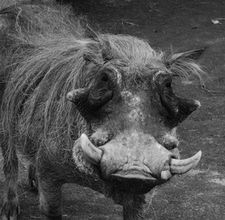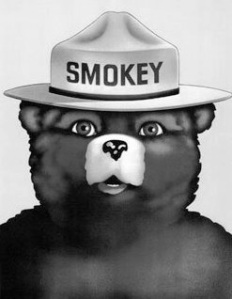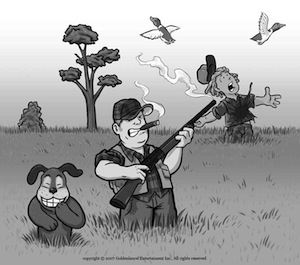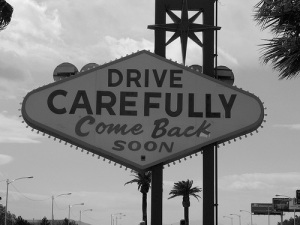For thousands of years people have participated in hog hunting out of necessity and for enjoyment, however, what is truly amazing is that hunters have maintained its purpose and high standards the whole time. Although currently hog hunting is conducted very differently than it was in the when it first started in Persia, people still have the same enthusiasm about hog hunting.
If you’re a new hunter and want to try out hog hunting, then you need to be aware that that there is a greater risk of danger hunting hogs than with other kind of hunting; however the gratification gained might make it feel like the risks are not important to actually matter.
Rules must be clearly established from the start: don’t approach a hog in any type of way that will put your life in danger. Remember this, you need to realize that hogs usually show aggression if they feel threatened, specifically when their piglets are nearby. These animals have a reputation as fighters, being violent and showing no fear when attacked by an enemy. So, don’t give an impression that you are an enemy by keeping the right distance between you and the hog, or try to find a cover spot that is a long way from the particular path that hogs usually travel upon. This means that you must watch their routes, take notes about their where they gather and seek advice from landowners that have seen hogs in their area.
The fact is, being prepared is very important for hunting hogs, maybe more than anything. Being aware of the areas where hogs usually come, either to eat, for leisure activities or to breed is important for all hunting experiences. It is easy to do this if you have skilled hog hunting guides to show you the best locations in the area.
To an unskilled hunter, all parts of the woods look alike, with nothing particular, however a skilled hunter knows the hog’s schedule just by observing general signs. Footprints are evidence that a hog has walked through a certain area recently, or the signs may indicate they haven’t been in the area for a while. Also, consider that hogs usually go to areas that are easy to access, not close to bedding areas, and, if available, close to trails and water. Hogs have habits of visiting the same area, again and again, so if you find a good location to place your bait don’t go anywhere else, because the odds are another hog is on its way soon.
This brings us to the least favorable part of hog hunting: getting the bait ready and putting the bait down. The bait you use should primarily contain corn, and it will draw hogs to the bait hole you have previously dug. Since they have an amazing ability to smell, hogs can’t say no to a free meal even if it is a long way. Usually they will come in big quantities, but this is not good since they will eat all the food before you have the opportunity to shoot, so if you’re going to put bait out, be prepared to hunt. Don’t “set it and forget it”. Also, remember to remain as far away as you can from the baiting area (human odor will probably be noticed by the animals and it will upset them), but still stay within a reasonable shooting range.
The great thing about hog hunting, at least in south Texas, is that the hog population is plentiful enough that there are no bag limits. After all, hogs have been running rampant in the south for decades, maybe centuries, but people are amazed that they have survived the test of time.
One final tip – before leaving on your hog hunting trip, be sure that you’re carrying enough firepower; best to bring something with at least a .30 caliber to take them down. Otherwise you’re just going to make them angry, and an angry hog is not something you want to mess with. Check out the close call this guy had in the video below.







